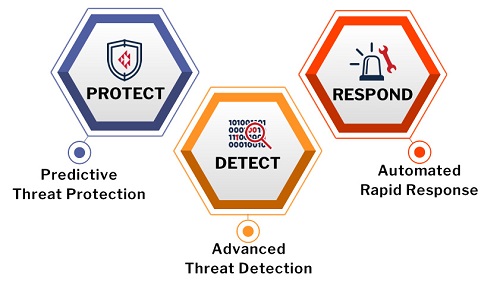Extended Detection and Response Market: Strengthening Cybersecurity Defenses
In an increasingly digital world, the threat landscape has evolved, and businesses face sophisticated cyber attacks that can cause significant damage. To combat these threats effectively, the extended detection and response (XDR) market has emerged as a powerful solution. XDR leverages advanced analytics, machine learning, and automation to provide comprehensive threat detection and response capabilities. This article aims to provide a strategic research report and user-friendly information on the XDR market, offering insights into market overview, competitive analysis, market drivers, market restraints, segment analysis, and regional analysis.
Extended Detection and Response Market Overview:
The Extended Detection and Response market size is projected to grow from USD 2.2 Billion in 2023 to USD 31.3 Billion by 2032, exhibiting a compound annual growth rate (CAGR) of 39.20% during the forecast period (2023 - 2032). The extended detection and response market has witnessed significant growth in recent years, driven by the escalating frequency and complexity of cyber attacks. XDR solutions integrate data from multiple security sources, such as endpoint detection and response (EDR), network traffic analysis (NTA), and security information and event management (SIEM) tools. By aggregating and correlating this data, XDR enables organizations to detect and respond to threats more effectively, reducing the time to identify and mitigate security incidents.
Get a sample PDF of the report at –
https://www.marketresearchfuture.com/sample_request/12210
Competitive Analysis:
The XDR market is highly competitive, with several key players vying for market share. Established cybersecurity companies, such as,
- Palo Alto Networks
- Trend Micro
- Check Point Software Technologies
have expanded their offerings to include XDR capabilities. Additionally, there are emerging players and startups that specialize in XDR solutions, focusing on innovative features and integrations. The competitive landscape is characterized by continuous innovation and the development of advanced technologies to stay ahead of evolving cyber threats.
Market Drivers:
Several factors are driving the growth of the extended detection and response market. Firstly, the increasing complexity of cyber attacks, including advanced persistent threats (APTs) and ransomware, has highlighted the need for more comprehensive and proactive threat detection and response capabilities. Secondly, the growing adoption of cloud-based services and the proliferation of connected devices have expanded the attack surface, making organizations more vulnerable to cyber threats. Additionally, regulatory requirements and the need to protect sensitive data have heightened the demand for robust cybersecurity solutions like XDR.
Market Restraints:
While the XDR market offers promising solutions, there are certain challenges that need to be addressed. One major concern is the shortage of skilled cybersecurity professionals capable of effectively utilizing XDR tools and analyzing the vast amount of security data generated. Moreover, the complexity of integrating disparate security solutions within an organization's existing infrastructure can pose implementation challenges. Additionally, concerns regarding data privacy and compliance may hinder the widespread adoption of XDR, especially in highly regulated industries.
Segment Analysis:
The extended detection and response market can be segmented based on deployment mode, organization size, vertical, and region. Deployment modes include on-premises, cloud-based, and hybrid solutions, providing organizations with flexibility in choosing the most suitable option. Organization size segmentation caters to the unique needs of small and medium-sized enterprises (SMEs) and large enterprises. Vertical segmentation encompasses industries such as banking and finance, healthcare, government, retail, and manufacturing, each with specific cybersecurity requirements.
Browse a Full Report –
https://www.marketresearchfuture.com/reports/extended-detection-response-market-12210
Regional Analysis:
The extended detection and response market is witnessing significant growth across different regions. North America leads the market, driven by the presence of major cybersecurity vendors and early adoption of advanced security solutions. Europe is also a prominent market, with stringent data protection regulations and increasing cybersecurity investments. The Asia Pacific region is experiencing rapid growth, fueled by the expanding digital landscape and the rising number of cyber threats. Latin America and the Middle East and Africa are also emerging markets, driven by the increasing awareness of cybersecurity risks.
The extended detection and response market is poised for substantial growth as organizations seek comprehensive and proactive cybersecurity solutions. XDR's ability to integrate and correlate security data from multiple sources enables organizations to detect and respond to threats more effectively, reducing the impact of cyber attacks. However, challenges such as skills shortage, integration complexities, and data privacy concerns need to be addressed. As the threat landscape continues to evolve, XDR will play a pivotal role in strengthening organizations' cybersecurity defenses, safeguarding their critical assets, and ensuring business continuity.



